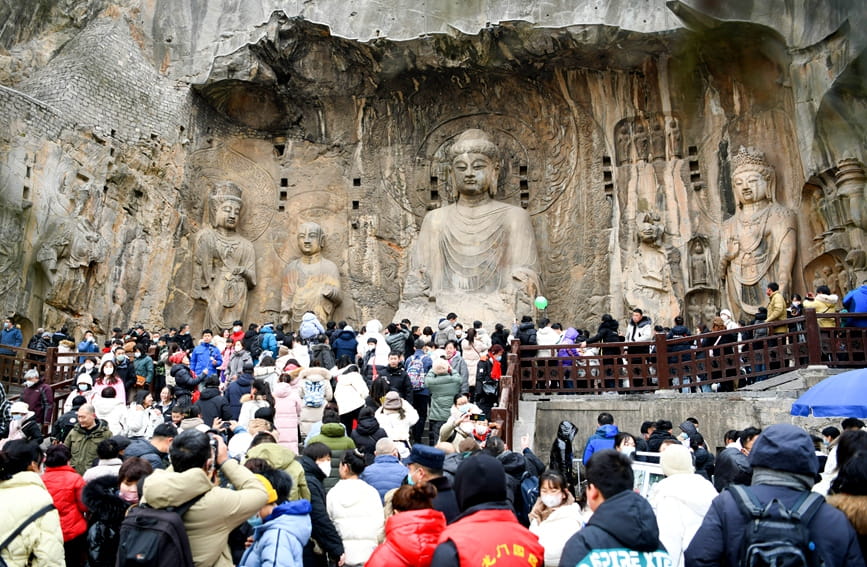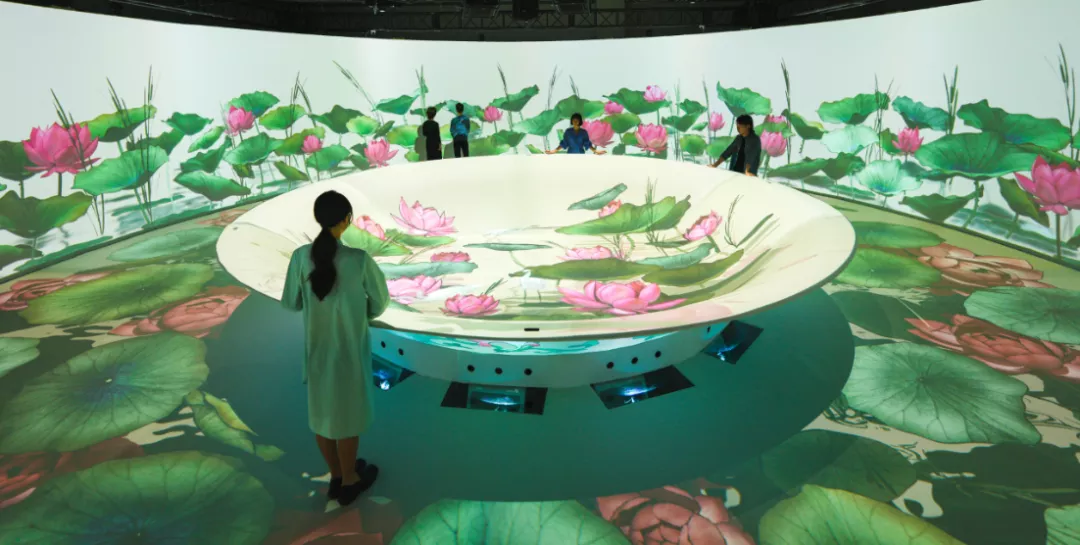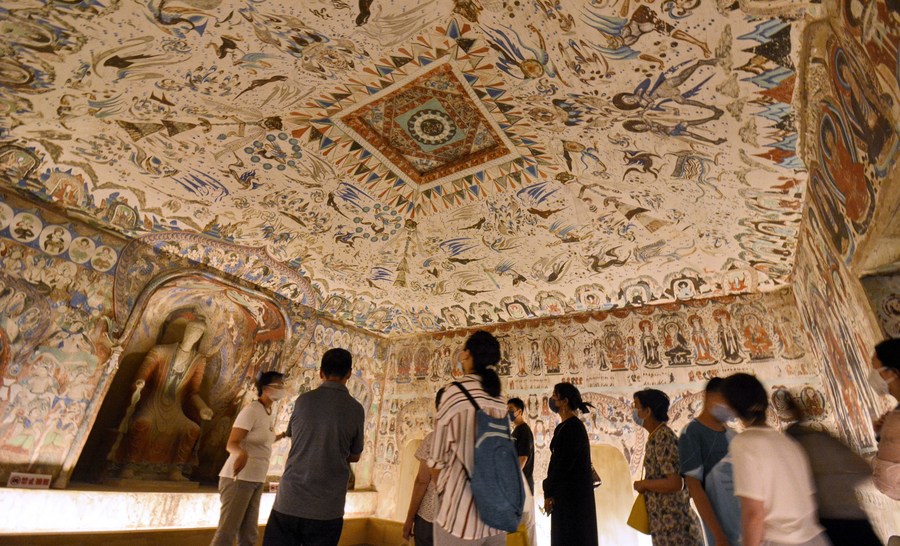Digital technologies have brought about a number of new tourism products and experiences for tourists in China, bringing cultural heritage back to life while injecting fresh impetus into tourism.
Many tourist attractions across the country have harnessed the power of the innovative technologies and presented immersive experiences for visitors. The Longmen Grottoes in Luoyang, central China's Henan Province developed a holographic display which incorporates key elements of the grottoes and Luoyang, allowing viewers to have a better understanding of local culture.

Tourists flock to the Longmen Grottoes, a World Cultural Heritage site in Luoyang, central China's Henan Province, over the Spring Festival holiday. (People's Daily Online/Zhang Yixi)
"I was mesmerized by the show during my trip here," said a tourist named Xiaoxiao, whose short clip of the show uploaded online was liked by many internet users.
The Yellow Crane Tower in Wuhan, central China's Hubei Province and the Mogao Grottoes in Dunhuang, northwest China's Gansu Province, have also developed holographic displays based on the tourist attractions to showcase their culture and charm.
A development plan for the 2021-2025 period released by China's Ministry of Culture and Tourism said the country aims to, by making use of 5G, Augmented Reality (AR), Virtual Reality (VR), artificial intelligence and other scientific and technological innovations, develop new tourism products featuring immersive experiences.
China's tourists have a higher demand for the aesthetic value and quality of tourism products. The country needs to give more efforts to ensure the quality of immersive experiences, which stand out in terms of traveling experience and interaction, said Wei Xiang, a professor at the National Academy of Economic Strategy of the Chinese Academy of Social Sciences.
Digital innovations play an important role in protecting and inheriting cultural heritage. The Way in Patterns, an immersive digital exhibition organized by the Palace Museum and Chinese internet giant Tencent, brought visitors an amplified perspective of different artifacts in the Palace Museum's collection. A magnified naked-eye 3D version of the treasures of the museum, standing 5.3 meters high, was displayed at the exhibition.

The Ways in Patterns creates an immersive environment which brings visitors an amplified perspective of artifacts in the Palace Museum's collection. (Photo provided to China Daily)
Viewers can also easily access the Mogao Grottoes in Dunhuang on smart phones or computers with the help of a digitalization project, which includes massive digital cultural resources of the UNESCO World Heritage Site through the use of computer and digital scanning technology.
Digitalization is an effective approach to bring the vast number of cultural heritage of China back to life, as the digital versions of the artworks are permanent, replicable and can be obtained immediately. It helps cultural heritage transcend the geographical barriers, and brings them closer to viewers, experts said.
Wei believes that tourism is traditionally a labor-intensive industry. But thanks to digital technologies, it has significantly improved productivity and boosted economic growth, suggesting the further application of digital technologies in this sector and advancing smart tourism.

Photo taken on July 10, 2022 shows that visitors watch a replica of a Dunhuang grotto at an exhibition in Beijing. (Xinhua/Li Xin)
